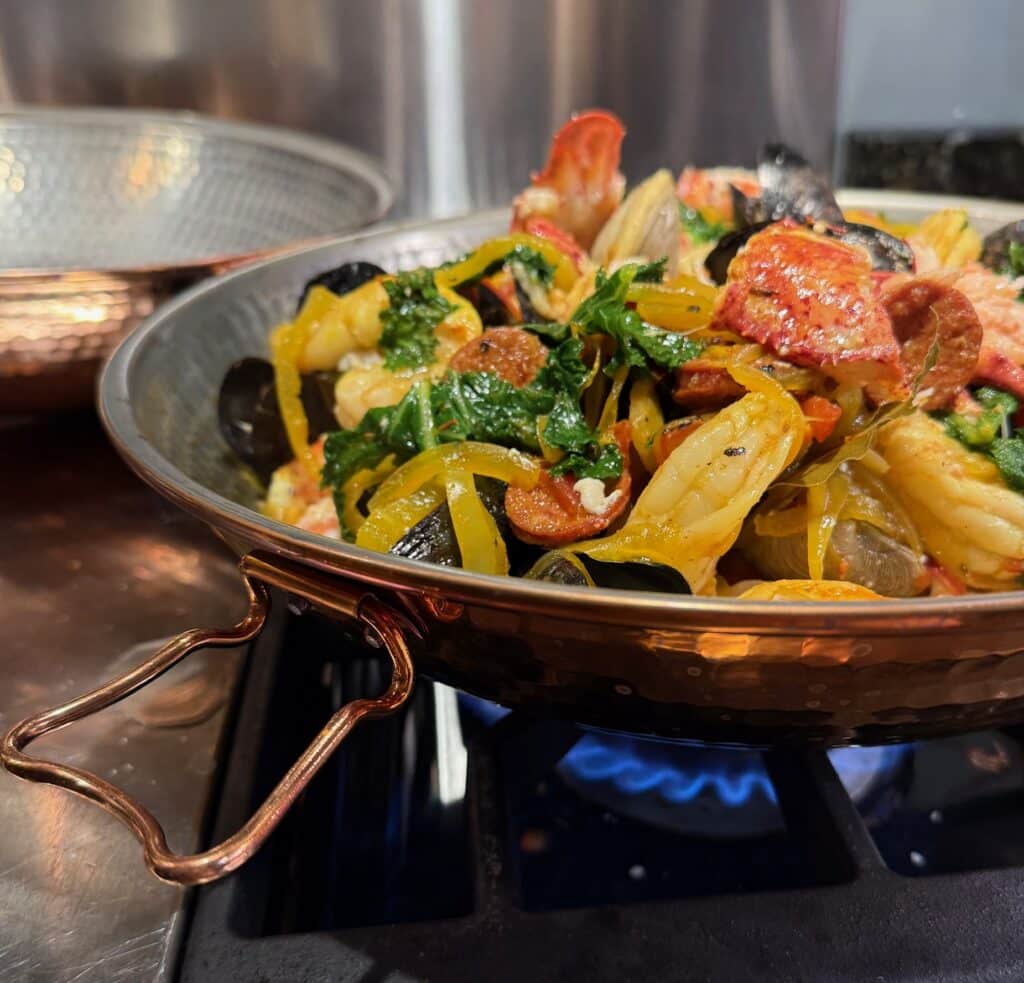I’d wager that every country with a coastline has a dish comparable to a cataplana, the Portuguese seafood stew of that name. The South of France has its bouillabaisse, Italy (and San Francisco) their cioppino, Brazil its Moqueca de Piexe, Spain its Paella, the Netherlands its Waterzooi. South American, African and Asian countries all have their signature seafood melanges; far too many to list here. Like tagine, paella or even chowder, the dish’s name has evolved from the pot in which it is cooked.
I first encountered the cataplana on my first night in the Algarve, Portugal’s southern coast. In a restaurant in Lagos, we were served our cataplana in a steaming copper vessel, hinged so it can be opened for serving. While there are variations on fish stews and soups even within a given town, my contention has always been that these dishes originated with what was left in the fishermen’s nets, despite admonitions that a particular fish, mollusk or cephalopod is required to be “authentic.”
Some culinary purists insist that rascasse, a type of scorpionfish found in the Mediterranean, is necessary for a true bouillabaisse. But it’s hard to imagine that any fisherman worth his salt would refuse to sell his last rascasse (even if someone wanted to buy it) in order to add it to that night’s bouillabaisse. (Besides, they are venomous and extremely unattractive.)
In Lagos, Portugal, you can watch the fishermen unload their catch in the morning, buy it in the municipal market later that day, and dine on these treasures for dinner. I imagine this is true in numerous fishing ports around the world.

The origin of the cataplana is apparently not known, but most culinary historians seem to agree that it is a cousin of the North African tagine, and was likely crafted by skilled Moorish metal artisans when they ruled Portugal for some 500 years, from the 8th century to the 12th. As you can see from the photo it is a lovely bit of coppersmithing, copper having been valued for centuries for its even heat distribution properties. The architectural and cultural influence of the Moors is unmistakable in the Algarve, and north African craftspeople still can be found selling their wares at street markets.
The fact that the slightly flattened golf ball shape that defines it can be clamped shut makes it a precursor to the pressure cooker. The distinctive shape means it can steam ingredients together, melding flavor and aromas. Although I use olive oil when starting to sauté the ingredients, it doesn’t require too much, making it a healthy way to cook. It’s also a visual feast to open the cataplana at the table allowing your guests to breathe in the aroma, and choose their favorite frutta di mare. ![]()
View the recipe here:https://cms.thecookscook.com/recipes/classic-cataplana/
